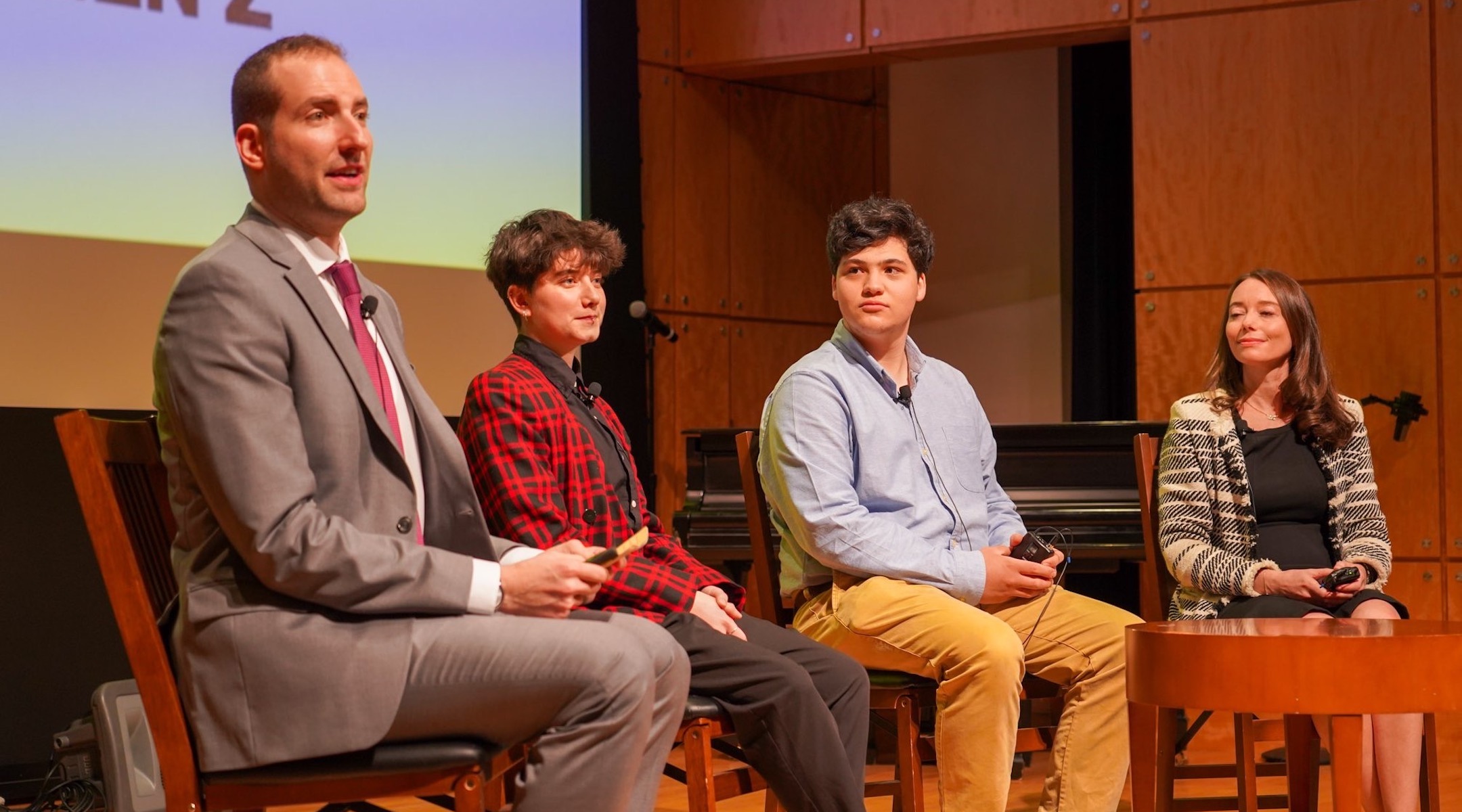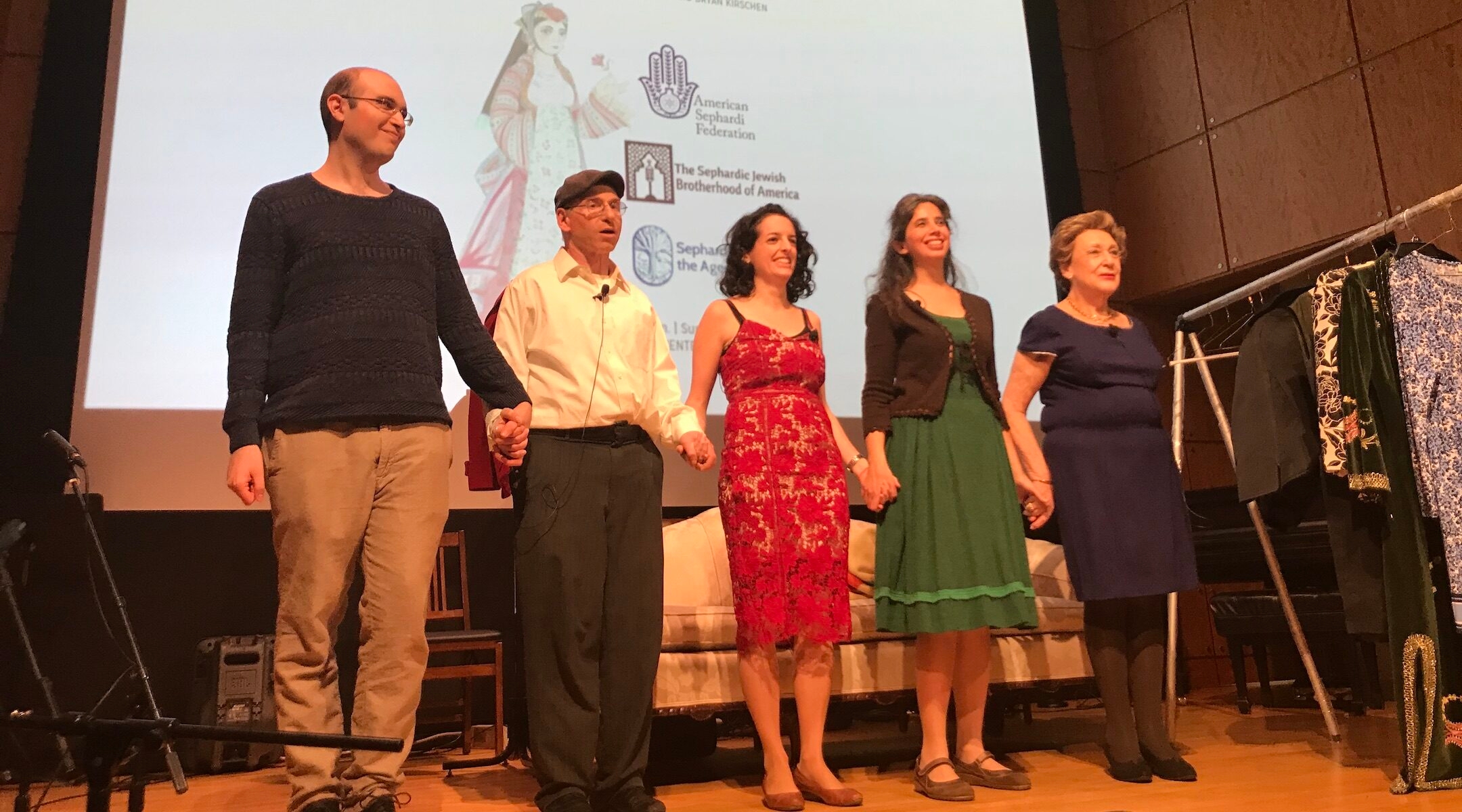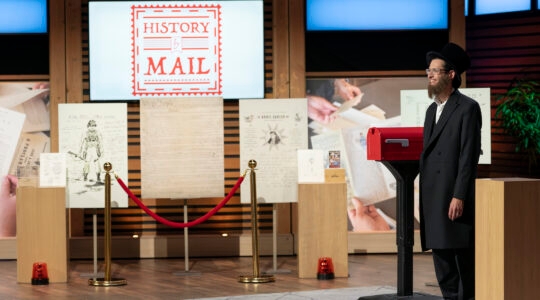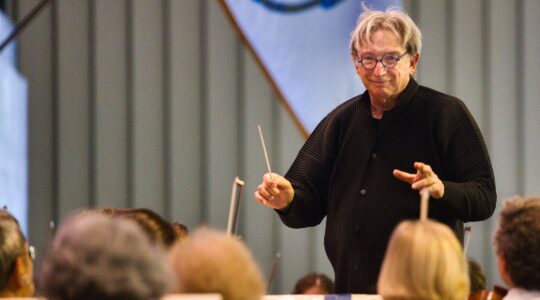(New York Jewish Week) — The sixth annual New York Ladino Day — which aims to celebrate and elevate Ladino culture in New York and throughout the world — will take place this Sunday at the Center for Jewish History in Manhattan.
For the first time since the pandemic, the program will be conducted in person, though a livestream option is also available. This year’s theme is “Kontar i Kantar” — “Storytelling and Singing” — and will include a performance from Tony- and Grammy-nominated Broadway singer Shoshana Bean and a conversation with Michael Frank, author of “One Hundred Saturdays: Stella Levi and the Search for a Lost World,” as well as additional music-oriented speakers and performances.
“Music is certainly one of the domains in which the language is doing well and generating new interest and new music,” said Bryan Kirschen, a professor of Hispanic Linguistics at Binghamton University and one of the event’s organizers. (Kirschen was one of the New York Jewish Week’s “36 Under 36” in 2017.)
Ladino, or Judeo-Spanish refers to the language spoken by Jews who trace their origins to the Iberian Peninsula. After the Jews’ expulsion in 1492, they preserved elements of their language while also incorporating new linguistic features and vocabulary into it as they settled throughout the Ottoman Empire — Turkey, North Africa and the Balkans. Today, the estimated number of Ladino speakers around the world — mostly Sephardic Jews — ranges between 60,000 to 300,000, from fluent speakers to descendants who are familiar with some words.
Sephardic Jews were the first Jewish immigrants in New York, founding Congregation Shearith Israel in 1654, the oldest Jewish congregation in the United States. (It’s still in operation today at 2 West 70th St., where it has been since 1897.) Sephardic Jews remained the only active Jewish community in New York until the wave of German Jewish immigration in the early 19th century, followed by the mass immigration of Eastern European Jews that began at the tail-end of the 19th century.
Soon enough, Ashkenazi Jews quickly outnumbered New York’s Sephardic community, though Sephardic and Ladino culture continues to thrive today. Today, the main hubs for Sephardic and Ladino culture and education are the American Sephardi Federation and the Sephardic Jewish Brotherhood of America, with a range of programming also happening at synagogues like the Kehila Kedosha Janina Synagogue and Museum, The Sephardic Jewish Center of Forest Hills and the Sephardic Jewish Center of Canarsie.
Ladino, said Kirschen, remains “a very living, in some ways thriving language, interestingly enough, particularly since the pandemic.”
Ahead of Sunday’s celebration — which is co-curated by Jane Mushabac, a professor emerita of English at City University of New York and a Ladino scholar and writer — the New York Jewish Week caught up with Kirschen to discuss the program, his personal interest in Ladino, and how Ashkenazi Jews can help uplift Ladino language and culture.
This interview has been lightly edited for length and clarity.

Kirschen, far left, leads a panel discussion during the 2020 New York Ladino Day celebration. (Courtesy Bryan Kirschen)
New York Jewish Week: How did you become interested in Ladino culture? Are you from a Sephardic family?
I’m from an Ashkenazi, Yiddish-oriented family; I’m not Sephardic. But for the past 15 years or so, I’ve been doing my best to learn as much about Sephardic culture as I can, and learn as much as I can about Ladino as well. My own interest stems from learning languages — I’m a Spanish professor at Binghamton University and I have also studied Hebrew for numerous years. When I first came across Ladino, it interested me for a number of reasons. Once I started to meet actual speakers, it became so much more than just the language — it became about celebrating and promoting the culture, the history, the connections, of course the food and the music.
What is the origin story of New York Ladino Day?
The idea of Ladino Day came about in 2013 — to have a day when communities around the world would celebrate all that remains. Originally, the day was selected to be during Hanukkah. But because there is no real central organization that governs the language — though there are different institutions, particularly in Israel, that try to foster the language and help promote it — Ladino Day grew in many different directions.
These days, some communities celebrate in January, some in February, some still in December. The National Authority of Ladino in Israel has their own International Day of Ladino in March. But the important thing is that communities all around the world are committed to celebrating it in their own ways.
As far as New York goes, the American Sephardi Federation at the Center for Jewish History in Manhattan started holding a Ladino Day six years ago under the direction of my collaborator, Jane Mushabac, who is Sephardic from a Ladino-speaking family. I had been separately organizing Judeo-Spanish celebrations with the Sephardic Jewish Brotherhood of America at The Sephardic Jewish Center of Forest Hills, so the following year we joined forces and started co-curating the program together and have been doing that ever since.
The theme for this year’s program is “Kontar i Kantar.” How is this year’s theme different from years’ past?
Last year, our theme was “Salud i Vida, which is a common expression for “health and life” and which was fitting for the time. Like most of the world, we had to pivot for the last two years and hold the program online. That afforded different opportunities — we were able to bring in speakers from around the world in a way that was much more doable, and we were able to open up our program to the world. Normally, we like to focus on New York talent and language, but the previous few years doing online events we were featuring different voices from the Sephardic world, so many new connections were made.
Because of that experience, this year’s program will be back in person at the Center for Jewish History, but with a hybrid option. The theme is “Kontar i Kantar,” “Storytelling and Singing.” It will both acknowledge how important music has been to Ladino, and celebrate how, in recent years, there have been so many initiatives for people to get together to share their stories in or about Ladino and to sing in the language.
Most Jews in New York have an Ashkenazi background. What role or responsibility do you think Ashkenazi Jews have in honoring and preserving Ladino culture?
Yes, the numbers [of Ashkenazi versus Sephardi Jews] don’t match up. Still, Sephardim from Turkey and areas of the former Ottoman Empire brought tens of thousands of Sephardic, Ladino-speaking Jews to New York City at the start of the 20th century, but as a minority — as a minority within the Jews, as a minority-speaking language, etc. So as someone who is Ashkenazi, I understand the enormous responsibility that I have to represent this language in a positive and genuine way to others and to work with and uplift speakers of Ladino.
Like Yiddish, entire communities of Ladino speakers were killed in the Holocaust, and those who didn’t experience the same fate often gave up their Ladino to assimilate. So many speakers today, who are typically in their 70s, 80s or 90s — or maybe younger generations who know some words here and there like foods, terms of kin — haven’t historically been so proud of using their Ladino. Aside from research and teaching, I’m really passionate about encouraging speakers and semi-speakers to use their language and to take pride in Ladino and ideally, give them a platform to do so.
Bonus question: What are some common misconceptions about Ladino?
Ladino is a living language — that’s something I’m very vocal about. There are all sorts of ways to classify and categorize languages, but as long as there are living, breathing, speakers and semi-speakers, the language is living. So despite all the obstacles, Ladino is a living language. There are speakers willing to share their language and their story with people, and there are amazing resources out there, both in person and online.
“Kontar i Kantar: The 6th Annual New York Ladino Day” will take place at the Center for Jewish History (15 West 16th St.) on Sunday at 2:00 p.m. A livestream option is available. Buy tickets and find more information here.
The New York Jewish Week brings you the stories behind the headlines, keeping you connected to Jewish life in New York. Help sustain the reporting you trust by donating today.





